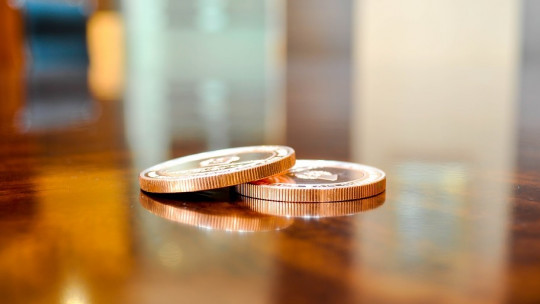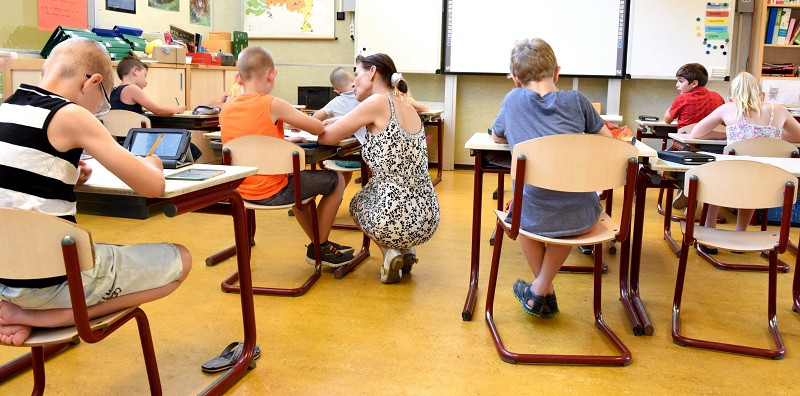
Acquire habits, eliminate certain behaviors or generate changes in the way you act… Sometimes Changing one’s own or others’ behavior can be complicated especially in boys and girls.
Fortunately, psychology and other disciplines have worked from different theoretical and technical currents that allow people to introduce changes in the way they behave. One of the techniques used for this purpose is the token economy
Token economy: A method of behavior modification
The token economy is one of the behavior modification techniques, which aim to produce a change in the behavior of the subject to be treated or to implement or eliminate specific behaviors. These types of techniques are based on the belief that behavior can be modified by learning new actions, and They are widely used to educate or intervene on disorders and also in the educational field with boys and girls.
The token economy technique is based on BF Skinner’s self-reinforcement concept of operant conditioning. This theory indicates that whether or not to emit a behavior depends on the consequences of said action that are perceived If these are positive, we will tend to repeat the behavior in anticipation of more reinforcement, while if they are negative, we will reduce its frequency or eliminate the behavior from our repertoire.
Thus, through the token economy it is about creating a context in which there is great room for maneuver to reward certain actions and discourage others, with a high degree of precision. By generating environments that predispose people in one way or another, they are helped to adopt and internalize these behavioral patterns and reproduce them in their daily lives in other situations. In other words, a space is designed in which the person trains certain ways of behaving while having professional support, and then applies that way of behaving in other situations without having direct help.
How is it used?
The procedure to be used in this technique is based on exchange. The emission of the target behavior will be rewarded with a generalized reinforcer in the form of tokens which can later be exchanged for reinforcers palatable to the subject.
The performance of the behavior is monitored by some type of recording system. The tokens themselves are a neutral stimulus, without value for the subject until he knows their connection with obtaining reinforcers. In this way, positive reinforcement is used to reward for carrying out the behaviors that we want to encourage; It is important that this happens without letting too much time pass after that action occurs and is rewarded.
It must be taken into account that this technique is very useful to modify behaviors already present in the subject’s repertoire, implement new behaviors or fade behaviors by rewarding incompatible actions or by withdrawing previously delivered tokens.
However, the token economy is only useful if we want to introduce modifications in a few specific behaviors, or otherwise the modifications are made very gradually and negotiating in advance with the child or patient the progress that should be made. doing.

Phases of the procedure
The token economy is a technique that is easy to apply, but requires following a series of stages in order to be applied correctly. Specifically, we can find three different phases, although sometimes they are considered reducible to a phase of program implementation and another phase of its fading.
1. Program establishment phase
The first step to be able to apply this technique is to explain and establish with the individual to be treated the procedure that is going to be carried out.
For this technique to be effective The subject must be able to understand the concept of a token, and what it is for The tokens that are going to be used are shown and the person is helped to understand that these elements are going to be used as interchangeable objects for certain reinforcers.
Thus, we turn the token into something desirable in itself and awaken the desire to obtain it. If necessary, it can be exemplified by giving the individual tokens so that they can exchange them for some element that can be effective as a reinforcer, showing the basic functioning and meaning of these interchangeable symbols. This procedure could be considered as a subphase, sampling the token as a reinforcer.
Subsequently, the subject is told that he or she will obtain a certain amount of tokens for each time he or she carries out a behavior, or if during a certain period of time he or she has performed or avoided a specific behavior.
It is also specified if there is any type of cost for doing the opposite of what was intended. In addition, the reinforcers to be obtained with the tokens are agreed upon and The value of each one is established, conditioning its obtaining to the performance or non-performance of certain behaviors.
Finally, a system is established and developed with which to record the person’s actions over time.
2. Implementation of the program
Once you have established what is going to be done, it is time to put it into practice. The performance of the boy, girl, student or patient is monitored granting them tokens (or taking them away in the event that they engage in prohibited conduct, depending on whether or not the response cost is applied) as the conduct is recorded.
It is recommended that at least initially each behavior emitted be rewarded immediately, so that the functioning of the system is fixed, although over time the rewards will be postponed. Furthermore, it is recommended that only a few of the possible reinforcers be available, so that the desire for those not yet available allows the behavior to be maintained over time.
3. Completion phase
In the last phase, which will close the program, the system is going to be “dismantled” of token economy until its completion.
As the subject increases mastery and practice in the target behavior, little by little the number of tokens required to achieve the reinforcers will begin to increase, while at the same time the tokens earned for each behavior performed will be reduced and hardened. the requirements to obtain the tokens and/or the period it takes to be delivered is increased.
Over time, the program itself stops being applied, with the subject having already established the behavior. However, changes must be informed to the individual so that there is no rejection and a reaction of elimination of the desired behavior or a worsening of the behavior that was intended to be reduced.
Areas of application
The token economy technique can be used both individually and collectively, but it will always be necessary to adjust and agree on both the behaviors to be executed and the reinforcers that can be obtained according to the needs of the individuals or group. It can be used to level and standardize a given environment, allowing it to be reorganized.
The token economy has a large number of application areas. Initially it was used to motivate patients with mental disorders to act in a more competent and adaptive way. In the clinical setting, therefore, it can be used to teach patients with disorders (for example, Autism Spectrum Disorders) to combat their symptoms through behavioral change.
It can also be used in the educational field, where in fact it is frequently used, especially in primary schools, or directly in homes as a tool to educate sons and daughters. Used in schools, it allows them to make an effort to act in a way that gets the reinforcer, helping to improve behavior But it is not only applied at school or in the clinic, it can also be used at an individual level to change habits.








